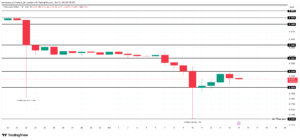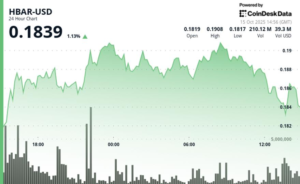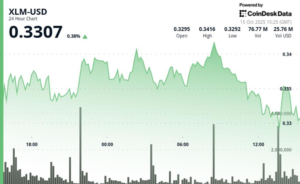Hyperliquid: Revolutionizing Revenue Generation in the Tech Industry
In a remarkable turn of events, Hyperliquid has recently established itself as the leader in revenue generation per employee, achieving a staggering $106 million. This remarkable figure surpasses even established giants like Tether Limited, which claims the second spot at $93 million per employee. The decentralized derivatives exchange operates with a lean team of just 11 contributors, showcasing an unprecedented efficiency in the tech landscape that challenges traditional business models.
Unprecedented Revenue Per Employee
Hyperliquid’s impressive revenue generation fundamentally changes the narrative surrounding operational efficiency in the tech sector. While traditional tech giants like Nvidia, Apple, and Meta report revenues of $3.6 million, $2.4 million, and $2.2 million per employee, respectively, Hyperliquid outpaces them by a considerable margin. This leap in performance can be attributed to its innovative operational strategies and cutting-edge trading technologies. By focusing on decentralized finance (DeFi), Hyperliquid has carved out a niche that maximizes profitability while maintaining minimal overhead.
The Power of Decentralized Finance
The backbone of Hyperliquid’s revenue model lies in its decentralized perpetual futures exchange. The platform operates on a structure that capitalizes on trading fees, capturing a percentage of swap fees directed to its treasury and token holders. This creates a direct revenue stream from trading volume, allowing Hyperliquid to forego extensive operational management compared to traditional financial services. CEO and co-founder Jeff Yan points out that this business model enables a focus on protocol development and optimization rather than day-to-day operational tasks, fundamentally changing how revenue can be generated in the tech and finance sectors.
Rapid Growth and Revenue Accumulation
Hyperliquid’s trajectory of growth has been phenomenal. Since December, the platform has amassed over $589.11 million in revenue, demonstrating not just consistent performance but accelerated growth in recent months. As of August 20, it generated $95.63 million in monthly revenue, placing it as the third-largest revenue generator among crypto protocols. This growth positions Hyperliquid behind only stablecoin issuers Tether and Circle, which pulled in $629.19 million and $203.91 million, respectively. Such rapid revenue accumulation establishes Hyperliquid’s significance within the cryptocurrency ecosystem and highlights the scaling potential of decentralized protocols.
Setting New Standards
Hyperliquid’s model raises compelling questions about the operational frameworks of traditional companies. For instance, Apple employs about 164,000 workers to achieve an annual revenue of $383 billion. In stark contrast, Hyperliquid’s small team generates an approximate $1.2 billion in revenue, demonstrating the efficacy of its automated trading infrastructure. This success challenges entrenched assumptions about the necessary manpower and operational complexity in financial services, repositioning decentralized exchanges as formidable competitors to traditional institutions.
Implications for the Future
The implications of Hyperliquid’s business model extend beyond its immediate financial achievements. As it demonstrates the viability of significant revenue generation through decentralized finance, it lays the groundwork for potential disruptors in the wider financial landscape. By showcasing how lean operational structures can effectively drive profitability, Hyperliquid’s success might inspire both startups and established firms to rethink their own operational strategies. In doing so, it could usher in a new era of efficiency, innovation, and revenue generation in tech and finance.
Conclusion
In conclusion, Hyperliquid’s ascendance to the top of the revenue-per-employee metric signifies a pivotal shift in how revenue generation is perceived in the tech and finance sectors. Its focused yet innovative approach to decentralized finance allows it to thrive with a small team, directly challenging traditional metrics of success. As the ecosystem evolves, watching how Hyperliquid and similar companies influence the future of revenue generation and operational efficiency will be crucial for investors, employees, and consumers alike. Through its exceptional performance, Hyperliquid is not just making headlines; it is rewriting the rules of the game.

















